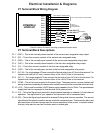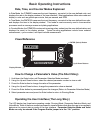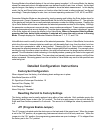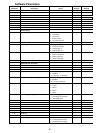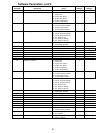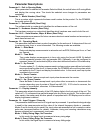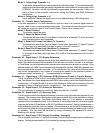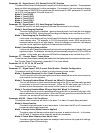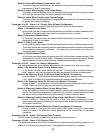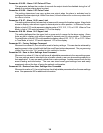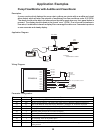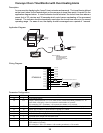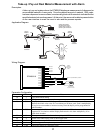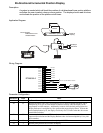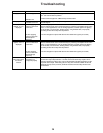13
Mode 3: Active When Display Value Below Limit
The alarm output will activate when the displayed value is below the lower limit settings,
parameters 47 and 57 accordingly.
Mode 4: Active When Display Value Inside Range
The alarm output will activate when the displayed value is greater than or equal to lower
limit settings and less than or equal to the upper limit setting.
Mode 5: Active When Display Value Outside Range
The alarm output will activate when the displayed value is less than the lower limit setting
or greater than upper limit setting.
Parameter 41 & 51 Alarm 1 & 2 Output Style & Reset Configuration
This setting configures the output mode and reset method for the alarm outputs.
Mode 1: Constant & Auto Reset
In this mode, the alarm output will remain active until the alarm condition ceases to exist.
The alarm will automatically reset when the conditions return to normal.
Mode 2: Constant & Manual Reset
In this mode, the alarm output will remain active until the alarm is reset manually. See
parameters 42 and 52 for details.
Mode 3: Pulse & Auto Reset
In this mode, the alarm output will pulse on and off until the alarm condition ceases to exist.
The pulsed modes are commonly used for audible alarms where a constant output would
be considered distracting or awkward. The alarm will automatically reset when the
conditions return to normal.
Mode 4: Pulse & Manual Reset
In this mode, the alarm output will pulse on and off until the alarm is reset manually. See
parameters 42 and 52 for reset details. The pulsed modes are commonly used for audible
alarms where a constant output would be considered distracting or awkward.
Parameter 42 & 52 Alarm 1 & 2 Reset Configuration
This setting determines which actions will cause an active alarm to be silenced or reset.
Mode 1: No Silencing, Reset On Any Button Press
In this mode, an active alarm cannot be silenced. Once the alarm condition ceases to
exist, however, any user-interface button may be pressed to cause a manual reset.
Mode 2: No Silencing, Reset On S2 Input High (Not Wired To Common)
Similar to Mode 1. Once the alarm condition ceases to exist, setting the S2 input to a high
(+5V) state or allowing it to float disconnected will cause a manual reset.
Mode 3: No Silencing, Reset On S2 Input Low (Wired To Common)
Similar to Mode 1. Once the alarm condition ceases to exist, setting the S2 input to a low
(COM) state or wiring it to common will cause a manual reset.
Mode 4: Silencing Enabled, Reset On Any Button Press
When the conditions for an active alarm persist, pressing any user-interface button will
result in the alarm being silenced or deactivated, but not reset. A second attempt to reset
the alarm must be made after the condition cease to exist to clear the alarm.
Mode 5: Silencing Enabled, Reset On S2 Input High (Not Wired To Common)
Similar to Mode 4. Setting the S2 input to a high (+5V) state or allowing it to float
disconnected will cause the alarm to be silenced or reset depending on the current state
of the alarm conditions.
Mode 6: Silencing Enabled, Reset On S2 Input Low (Wired To Common)
Similar to Mode 4. Setting the S2 input to a low (COM) state or wiring it to common will
cause the alarm to be silenced or reset depending on the current state of the alarm
conditions.
Parameter 43 & 53 Alarm 1 & 2 Display Flash On Alarm
This will cause the display to flash when an alarm conduction is active.
Parameter 44 & 54 Alarm 1 & 2 Pulse on Time
This parameter defines the number of seconds the output should be enabled during the on
phase of an active pulsing alarms output. See application samples for examples.



